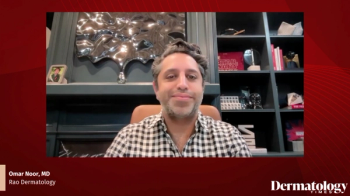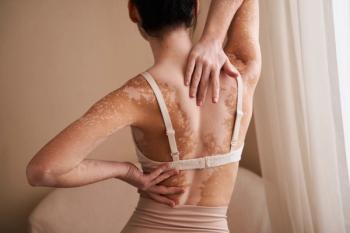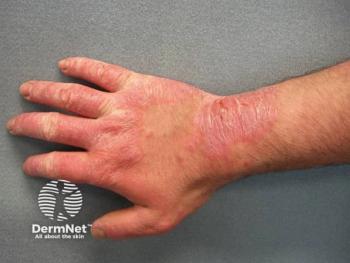
Karen McGuire, PhD, on Advancing TAMES-02 Trial for EB Simplex
Key Takeaways
- TAMES-02 focuses on blister monitoring, includes pediatric participants, and addresses plantar blistering as a secondary outcome.
- The trial enhances accessibility with free genetic testing, remote monitoring, and travel cost coverage for participants.
Karen McGuire, PhD, discusses TAMES-02, a clinical trial evaluating TolaSure for Epidermolysis Bullosa Simplex.
Following the recent launch of the
Q&A
Dermatology Times: To start, what were some of the key takeaways from TAMES-01 that influenced how you designed TAMES-02?
McGuire: As you can imagine, you learn a lot from each trial. I’d highlight three major takeaways.
First, our goal in TAMES-01 was to understand the progression of an EBS flare and determine whether TolaSure, our lead compound, could impact flare duration and severity. We looked at a variety of clinical endpoints, and what stood out was that after about 2 weeks, we stopped seeing new blisters in treated areas. By 3 weeks, the reduction in blister surface area was statistically significant. Since EB simplex is so dynamic, distinguishing blistering from wound healing was crucial. Because of this, we determined blister monitoring should be the primary outcome in TAMES-02.
Second, we wanted a more rigorous design. We increased the number of patients, lowered the age to include pediatric participants, and structured TAMES-02 as a true multicenter randomized controlled trial, led by Joyce Teng at Stanford and Amy Paller at Northwestern. Since most patients with EBS suffer from painful chronic plantar blistering, we also added the feet as a secondary outcome. Activity levels vary between patients, but we think it’s essential to study because if it’s important to patients, it should be important to the trial.
Third, we wanted TAMES-02 to be as patient-friendly as possible. We offer free genetic testing, reduced on-site visits to 3, conduct the rest remotely, and provide patients with cameras and support to capture images at home. We also cover travel costs for patients and caregivers and accept both US and international participants. Clinical trials are a huge commitment, especially for families, so we’re trying to make participation as accessible and supportive as possible.
DT: Have you looked at how the drug performs in high-friction areas, such as underarms or feet, which are most affected in EBS?
McGuire: We don’t have extensive data yet, but I can share an example from TAMES-01. We had a woman with blisters under her bra line, an area of high friction and moisture. She showed a very positive response, which was encouraging. In TAMES-02, with plantar blistering included as a secondary endpoint, we’ll be better able to answer that question. Ultimately, our long-term goal is blister prevention, though that’s harder to measure.
DT: Is patient quality of life being measured in this trial?
McGuire: Yes. We’re using validated, age-appropriate metrics, such as PROMIS scores for pain and itch. We’ve also modified the Foot Function Index and EB Quality of Life metrics to be more specific to EBS. Beyond that, we rely heavily on patient feedback, especially in small populations. We’ve worked closely with advocacy groups like DEBRA of America since the beginning. For example, after TAMES-01, a patient told me she was able to wear knee-high boots for the first time. You can’t capture that in a formal endpoint, but it’s deeply meaningful and motivating.
DT: Do you see TolaSure being applied to other rare diseases beyond EBS?
McGuire: Yes. EB simplex is only one of several keratin genodermatoses. At the Society for Investigative Dermatology, I presented data on pachyonychia congenita, where we saw similar effects in keratinocytes. We’re also collaborating with Amy Paller on epidermolytic ichthyosis, in partnership with advocacy groups like PC Project and EI Cure. These conditions will follow EB simplex in the BioMendics pipeline.
DT: As CEO and founder, what have been the biggest challenges and rewards of this work?
McGuire: Drug development always comes with challenges, but working in rare diseases is rewarding because you know the patients and families personally. I’m fortunate to have an incredible team, supportive advisors and investors, and partners like Falls River Group helping us prepare for a global launch. Our mission is to get tolasor into the hands of patients and caregivers and truly improve quality of life for those with EB simplex.
DT: Finally, is there anything else you’d like clinicians and patients to know?
McGuire: Yes—TolaSure is a topical therapy, which makes safety a key advantage. We’ve tested it in over 100 people across different trials and applications. Topicals are more approachable for patients—if there’s a reaction, you can simply discontinue. To potentially achieve disease-modifying effects with a topical is very exciting.
References
- BioMendics launches TAMES-02 clinical trial for innovative epidermolysis bullosa simplex therapy. News release. BioMendics. August 7, 2025. Accessed August 19, 2025.
https://www.businesswire.com/news/home/20250806145441/en/BioMendics-Launches-TAMES-02-Clinical-Trial-for-Innovative-Epidermolysis-Bullosa-Simplex-Therapy - Safety and efficacy of topical TolaSure targeting aggregated mutant keratin in severe epidermolysis bullosa simplex (TAMES). ClinicalTrials.gov. Identifier: NCT05062070. Updated September 11, 2023. August 19, 2025.
https://clinicaltrials.gov/study/NCT05062070
Newsletter
Like what you’re reading? Subscribe to Dermatology Times for weekly updates on therapies, innovations, and real-world practice tips.



















